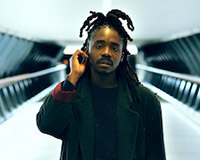In a tour de force presentation John Wakely predicted that the breaking up of Fortune into three with its golf and household goods being hived off, has left the Beam Global Spirits & Wine business as the last large drinks company available for take over.
He said Diageo needs a major bourbon (Jim Beam) and a tequila (Sauza). Pernod Ricard also needs a major tequila brand. The former could buy it now but would have some anti trust issues while Pernod may have to wait a year as it still needs to lower its borrowings.
He said: “Watch (Jose) Cuervo. If Diageo buys it they do not need Sauza.”
Wakely called the price Bacardi paid for the super premium French vodka brand, Grey Goose, “absolutely crazy” while the US$9billion Pernod paid for Absolut, the Swedish vodka, he said: “They paid a hell of a lot for a brand that has stopped growing in the US and doesn’t sell much outside of that.”
About beer, he said it had become “massively consolidated” and was now “boring”. Wine: “It is difficult. It is a very capital intensive industry run by nice people. Nice product. Therefore it is a bad industry, it is a crap industry”.
He said the appellation controlee system of demarking premium wine areas was “like rigging the market”. The French had been doing it for years and now the Californians were beginning to do it.
Wakely said the Australians believed in “free enterprise” and as a result they could not “give away Southcorp and now Foster’s” (Treasury Wine Estates).
Critical of innovation in the drinks industry, Wakely pointed to the “femininisation of alcohol” as a major change in consumer trends. He said it was typified by the women in the ‘Sex in the City’ series where the four main characters were seen to drink freely and excessively.
Wakely speculated that “figuring out what Asian women want to drink” and locking in on the “female pound” was a major opportunity. Similarly there were opportunities in South America and India but the onerous tariffs would have to come down first.
David Haigh, chief executive, Brand Finance, spoke about the development of standards for brand valuation. There is now ISO 10668 which sets out best practice for evaluating the worth of a brand.
He pointed out that the two Chinese companies, Kweichow Moutai and Wuliangye that came ninth and tenth in the Drinks Brands by Value league table (published in Drinks International, March 2011) posted up case sales of 156 and 234 million cases respectively. “Mind boggling numbers”, Haigh speculated on whether popular Chinese drinks would appeal to consumers in other markets?
“Are they a dud, a dry hole or could they be a new global phenomenon?” Haigh asked.
With Diageo’s Johnnie Walker taking the top slot, Haigh said that scotch represented the largest chunk of most valued brands, looking at highest value by nine-litre case, it fell to William Grant’s Glenfiddich followed by two champagnes, Mumm and Moet.
Consultant Richard Gowar spoke what they did with Courvoisier cognac when he was president of global brands development at Allied Domecq. Referring to “sprinkling the marketing magic” he cited Bailey’s liqueur, Smirnoff Ice ready-to-drink, Hendrick’s gin and Magners cider as brands that had done well. He speculated on whether Amrut, the major whisky brand, could sell outside of the Indian sub continent.
Colin Burns of Elmwood design agency, held up Grateful Dead guitarist Jerry Garcia, as the brand guru. The band allowed people to tape their concerts so they made nothing from records but cashed in on holding live concerts. He spoke of “scaling and authenticity; recovery and reinvention and being virtual and real”.
He referred to Korean snake wine as a local product that could go global. He cited Red Bull as an example. A “Thai vitality elixir” that has gone on to become a global brand.
He also referred to Asian women drinkers as a group who have “unmet needs” and therefore represent a significant opportunity.
Drinks International editor Christian Davis said that the four things that had emerged from the Brands by Value league table were: the global dominance of brands owned by Diageo and Pernod Ricard, the preponderance of spirits brands on the list; the emergence of China in particular with brands boasting huge case sales but hardly anyone had heard of them plus the absence of any Indian brands.



